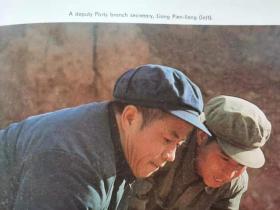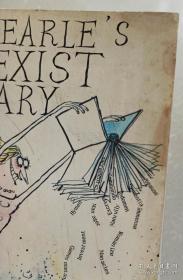
Soviet Bus Stops Volume II苏联公交车站二摄影集英国克里斯托弗·赫维格作品
摄影师克里斯托弗·赫维格在他的畅销书《苏联巴士站》之后在格鲁吉亚乌克兰俄罗斯本土发现了新的苏联本土奇观在二期摄影师穿越了世界上最大国家为这种独特的建筑形式寻找新的范例著名建筑和文化评论家欧文·哈瑟利前言揭示了苏联巴士站的起源分析了政府允许小型建筑形式蓬勃发展Z策解释了它们是如何尽管他们有着惊人个性但他们仍然是苏联意识形态的前哨建筑手法呼捷玛斯设计院使原产美国包豪斯风格先锋派的建筑设计艺术蓬勃发展
¥ 169 九五品
仅1件
作者Christopher Herwig(克里斯托弗·赫维格)
出版社FUEL Publishing(燃料出版)
出版时间不详
版次1
出版地伦敦
印刷时间1980
印次1
印数5千册
装帧精装
尺寸20.1 × 16.5 cm
正文语种英
上书时间2023-10-04
- 在售商品 暂无
- 平均发货时间 2小时
- 好评率 暂无
- 店主推荐
- 最新上架
商品详情
- 品相描述:九五品
- 全品为便利计九五
- 商品描述
-
On the heels of his bestselling Soviet Bus Stops, photographer Christopher Herwig locates fresh wonders of the Soviet vernacular in Georgia, Ukraine and Russia itself(摄影师克里斯托弗·赫维格在他的畅销书《苏联巴士站》之后,在格鲁吉亚、乌克兰和俄罗斯本土发现了新的苏联本土奇观。)
After the popular and critical success of his first book, Soviet Bus Stops, photographer Christopher Herwig has returned to the former Soviet Union to hunt for more. In this second volume, as well as discovering new stops in the remotest areas of Georgia and Ukraine, Herwig turns his camera to Russia itself. Following exhaustive research, he drove more than 9,000 miles from coast to coast across the largest country in the world, in pursuit of new examples of this singular architectural form.(在他的第一本书《苏联巴士站》大获成功后,摄影师克里斯托弗·赫维格(Christopher Herwig)回到前苏联,寻找更多精彩。第二卷中除了在格鲁吉亚和乌克兰最偏远的地区发现新的停留地点外,赫维格还将镜头对准了俄罗斯。在进行了详尽的研究之后,他驱车9000多英里,穿越了世界上最大的国家,为这种独特的建筑形式寻找新的范例。)
A foreword by renowned architecture and culture critic Owen Hatherley reveals new information on the origins of the Soviet bus stop. Examining the government policy that allowed these small architectural forms to flourish, he explains how they reflected Soviet values, and how ultimately they remained―despite their incredible individuality―far-flung outposts of Soviet ideology.
The diversity of architectural approaches is staggering: juxtaposed alongside a slew of audacious modern and brutal designs, there are bus stops shaped as trains, birds, light bulbs, rockets, castles, even a bus stop incorporating a statue of St. George slaying the dragon. An essential companion to the first volume, this book provides a valuable document of these important and unique constructions.(著名建筑和文化评论家欧文·哈瑟利的前言揭示了苏联巴士站的起源。他分析了政府允许这些小型建筑形式蓬勃发展的政策,解释了它们是如何尽管他们有着惊人的个性一但他们仍然是苏联意识形态的前哨。建筑手法的多样性令人惊讶:在一系列大胆的现代和野蛮的设计并列的旁边,有像火车、鸟、灯泡、火箭、城堡等形状的巴士站,甚至还有一个巴士站,里面有圣乔治被杀的雕像龙。作为第一卷的重要姊妹篇,本书为这些重要而独特的结构提供了有价值的文献。
在这第二卷,以及发现在格鲁吉亚 和乌克兰最偏远地区的新站点,赫尔维格把他的相机转向俄罗斯本 身。经过详尽的研究,他驱车 9000多英里…)
第一趟拍摄之旅小获成功,赫维格再次回到东欧。这位摄影师拍摄了13个前苏联国家的老式公交站。现在他的作品已经收录成册。
《苏联公交站》(Soviet Bus Stops)就是这些朴素建筑物的影集:“你能看出一些公交车站被重新刷漆继续使用,但大多数都已废弃或改建成普通车站了…公交站和‘苏L强大的国.家机器’没什么关系,”他说,“它们不是力量的象征并非要向外界炫耀这个政体强大。它们就是当地人和艺术家表达自我、享受艺术的产物…”
“呼捷玛斯”设计院的成立,使原产美国的“包豪斯风格”先锋派的建筑设计艺术在苏联有了极大发展,苏L成为先锋前卫建筑艺术的中心,体现到现实中就是苏联出现了一大批这种充满艺术表达的建筑设计。
该书代表了有史以来z全面,z多样化的苏联巴士站设计集合,这些集合来自哈萨克斯坦,土库曼斯坦,乌兹别克斯坦,吉尔吉斯斯坦,塔吉克斯坦,乌克兰,摩尔多瓦,亚美尼亚,阿布哈兹,乔治亚州,立陶宛,拉脱维亚和爱沙尼亚。 附有作家评论家和电视节目主持人乔纳森·米德斯(Jonathan Meades)的序言(Q.)。
【购前说明】
①现货实拍图,无修无P。
②忠事尽言,请仔细浏览描述介绍。认同者下单。
③可开发票,谢绝议价。
④货品无证书,谢绝凭证求真者。若不慎拍下,请联系店家处理。
— 没有更多了 —























以下为对购买帮助不大的评价